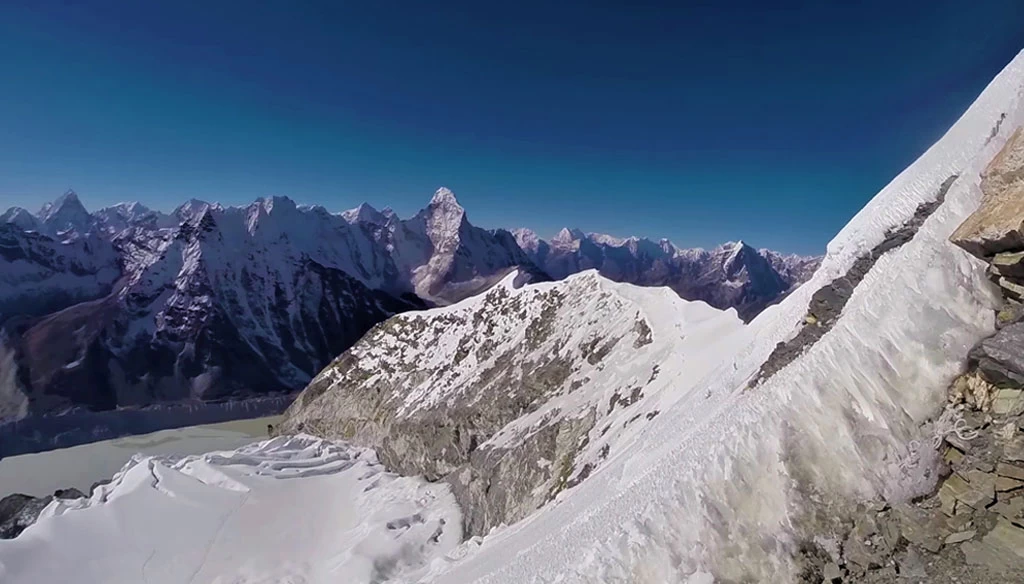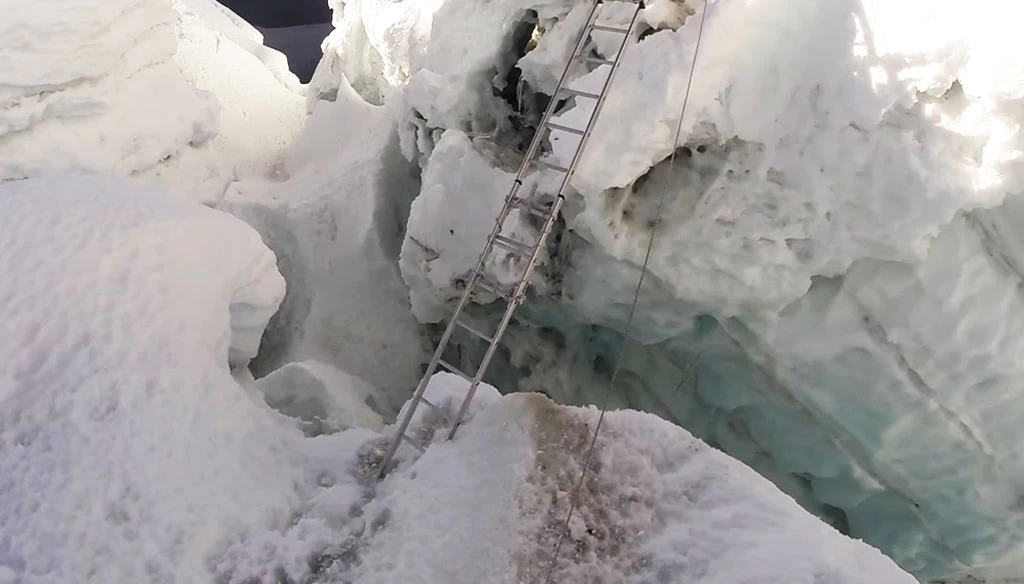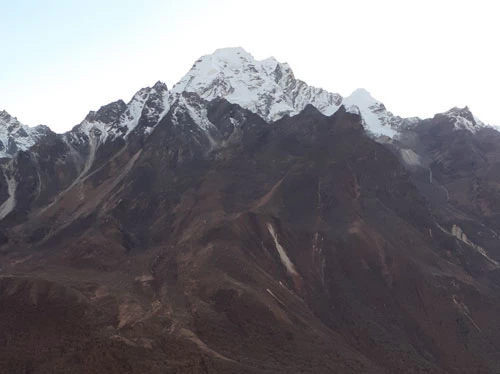Although it differs for each choice and interest. the list of equipment below is a general idea that provides some guidelines for gear to bring during your trek and for climbing.
Bringing clothes during the trek is all about how long you can go with smelly clothes vs how often you want to change clean clothes. However, we advise you to bring sufficient warm clothes fit for much colder weather as mountain weather is always unpredictable, especially for summiting mountains. just for a reminder, you can buy all this gear in Kathmandu as well.
Trekking equipment
duffel bag
you need a duffel bag that is supposed to be waterproof with a strap along with a TSA lock. in your duffel bag, you keep all the clothes and essential gear while trekking up to the island peak base camp which will be carried by our porter. Regarding the size, you can choose from 100 liters to 140 liters duffel as this size all you to fit most of the things you need for trekking.
Sleeping bag
it is the most important piece of equipment for trekking and climbing. Normally the smaller and lighter the size, the more expensive it is. Regarding the warmth of sleeping bags, sleeping bags are warmer than synthetic ones. you need to bring the sleeping bag that rates up to -20c and a liner just in case it feels colder.
Daypack bag
it's a daypack bag that you carry while waking where you put your wallet, camera, water bottle, rain cover, fleece jacket, and windproof jacket. Regarding the size of the daypack bag, the size of a small-medium 30 to 40-liter day bag with some side pockets where you can fit your water bottle or gloves is good. Moreover, if you can fit your Camelbak in your daily carry it is more efficient in the coldest weather as your water doesn't get freeze.
Water bottle
You can bring two water bottles in which you can drink in one and treat water in another to refill again. (Nalgene water bottle is good as you can put hot water as well if you want) you also can bring Camelbak which can be very handy for climbing.
Upper body
- Short sleeve synthetic t-shirts*3(while trekking you sweat a lot so, synthetic t-shirts are best to bring as they are light and dry fast)
- Wind shirts*1
- Long sleeve Merino wool t-shirts*2
- Synthetic insulated jacket (you can use it for climbing as well)
- Fleece glove
- Insulated gloves
- Buff (trail gets very dusty with trekkers and animals passing by you so, you can use it as a mask)
- Sunglass
- Sun hat
- Fleece hat
- Rain gear or poncho.
Lower body
- Trekking shoes (prober boots with grip is recommended as trail are rough so you might twist your ankle)
- Slipper or lightweight shoes (it is handy to wear in the guest house when you have done day trekking)
- Cotton hiking shocks
- Hiking pants*2
- Fleece trouser
- Underwear trousers*2
- Underwear
- Waterproof paint
Miscellaneous items
- Items for drinking water treatments such as steripen, iodine tablets, chlorine liquids, or water filters. (if you using liquids or tablets it might bring a different taste in water so you can bring some juice-powder to bring a nice taste)
- Fast-drying camp towel (most guesthouses don't provide a towel for a shower so it's good to have one)
- body wipes (it comes in handy if you don't take a shower, especially at higher altitudes where there are no showers)
- toilet papers
- lip balm
- Sunscreens (minimum of SPF 40 plus as in higher altitude sunlight are direct and more penetrating.
- Earplugs (it is handy stuff as most guest house rooms are separated by plywood. So, sometimes your next-room trekkers might be noisy talkers or snores.
- Mobile phone (you can use it as an alarm or there are internet services in most of the guest house so, you can use it if you want to communicate)
- Diary
- Chargers with an adapter (you can charge your gadgets along the trail with hydro-powered electricity in the lower region and sun-powered in the higher region)
- Camera
- Medical kit (Diamox, Imodium, ibuprofen, throat lozenges, tape, scissor,
- Zip-lock plastic bag (Although you put your all stuff in a duffel bag, a Zip-lock bag can come in handy when you want to separate your items like toiletries, socks, underwear, and smelly clothes)
- Headlamp or torchlight
- Hand sanitizer
- Trekking sticks (most people use them and it is very helpful while walking rocky trails and especially for knees going downhill.
- Sandal
- Pocket knife
- Pee-bottle (it's handy if you don't want to go out of the room during the night)
For climbing our company arrange accommodation at the base intent as well as food and guide. We also provide equipment for climbing such as ropes, ice hammers, and ice screws. If you need a porter to carry your day pack while climbing on the mountain we also arrange an additional cost of USD 70.
Buying climbing gear is more expensive back home, but we can arrange all the gear for an additional cost of USD 200. (The cost of renting gears keeps changing so, please enquire for an updated price)
These are the lists you need to bring for climbing Island Peak.
- Synthetic insulated paint
- Shell jacket (which you can put on top of the down jacket while climbing)
- Insulated snow pant
- Thick climbing shocks
- Mountaineering boot
- Snow goggle
- Climbing harness
- crampons
- Ice ax
- Belay device (black diamond ATC XP which is perfect for the progressive climber, excellent braking capabilities, and durable design)
- Climbing helmet
- Locking carabineers*2 (D shaped)
- Non-locking carabineers
- Ascender
- Gaiters
- Mountaineering gloves










